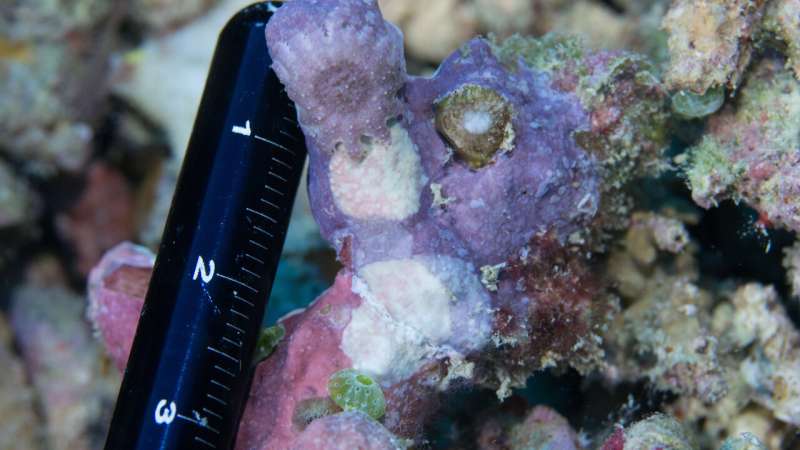Early stage herbivorous crown-of-thorns starfish camouflaged against the coralline algae that it has been feeding on, with a recent feeding scar directly adjacent. Credit: Daniel J. Schultz
Crown-of-thorns starfish are renowned for eating coral and destroying coral reefs—but when juvenile crown-of-thorns first settle in reef environments they start out by eating rock-hard coralline algae. In a new study, Jennifer Wilmes and her colleagues compared the growth between juvenile crown-of-thorns starfish that switch diets early after settlement (within six months) versus those that continue to feed on coralline algae for up to a year.
The authors found that juveniles that start eating corals earlier exhibit enhanced growth rates for longer and will ultimately get much bigger. Larger crown-of-thorns starfish have much greater reproductive capacity and consume coral at higher rates. The variation in early development can have important consequences not only for crown-of-thorns starfish population dynamics, but for their impacts on coral reef ecosystems.
The study concludes: "Understanding the mechanisms that determine population replenishment is essential to develop effective early management intervention strategies. Failing to develop well-informed decision tools risks to produce counterproductive management outcomes and could in the worst case contribute to the collapse of the system itself, with potentially devastating and irreversible impacts on reef ecosystems."
More information: Contrasting size and fate of juvenile crown-of-thorns starfish linked to ontogenetic diet shifts, Proceedings of the Royal Society B: Biological Sciences (2020). DOI: 10.1098/rspb.2020.1052
Journal information: Proceedings of the Royal Society B
Provided by ARC Centre of Excellence for Coral Reef Studies
























